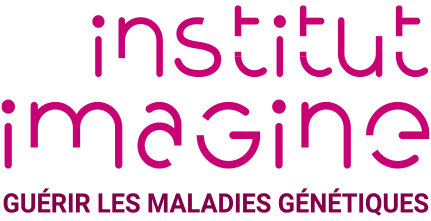Published on 04.06.2025
The left-right laterality of the embryo is essential for the formation of asymmetric visceral organs. Anomalies in the lateralization process lead to the heterotaxy syndrome, a severe condition including complex cardiac malformations that can be fatal. The mechanisms of symmetry breaking during embryonic development are now well established in the mouse : motile cilia present on the surface of embryonic cells, at the level of the “left-right organizer node”, generate a leftward fluid flow . This flow is detected by specific cells which, according to this signal, asymmetrically synthesize the Nodal left determinant in the embryo. Genetic alterations in node formation, cilia formation or Nodal signaling are thus associated with heterotaxy in mice and humans.
The heart is the first organ to undergo asymmetric morphogenesis in the embryo. Sigolène Meilhac, who heads the “Heart Morphogenesis” lab at Institut Imagine (Inserm, AP-HP, Université Paris Cité), and her team had already shown that in the absence of Nodal, asymmetries are present but reduced, and that the shape of the cardiac tube (the embryonic heart) is abnormal. This indicates that Nodal is not always necessary to initiate asymmetry, and that there are other asymmetry factors in addition to Nodal signaling.
In their work, recently published in PlosBiology, the researchers focused on asymmetric gene expression during embryonic development. By comparing left and right samples, they revealed that Notch3 is a novel gene enriched on the left side of the embryo. Notch3, a member of the Notch receptor family, is already known for its role in the formation of arterial smooth muscle, for example in the CADASIL syndrome, a genetic disease affecting small blood vessels in the brain. Sigolène Meilhac team has now shown that Notch3 is expressed in cardiac cells and co-expressed with Nodal. Single mutation of Notch3 does not cause heterotaxy, but does generate anomalies of the ventricle, aortic valve, cardiac septation and coronary artery. In contrast, Notch3 mutation worsens the phenotype of Nodal mutants, demonstrating its role as a modifier gene for laterality defects.
In a cohort of patients, the researchers also identified rare new variants of the NOTCH3 gene, associated with two types of cardiac anomalies : similar to those observed in Notch3 mutant mice, or similar to those observed in heterotaxy.
These results are therefore crucial in demonstrating two new roles for Notch3, both in heart development and in left-right laterality. In humans, NOTCH3 had so far been mainly associated with vascular anomalies (such as in the CADASIL syndrome mentioned above, or Sneddon syndrome) or neural anomalies, such as in the lateral meningocele syndrome, all rare diseases of genetic origin. However, rare patients with lateral meningocele syndrome also have cardiac anomalies, the origin of which remained enigmatic. The work of Sigolène Meilhac team shows that Notch3 mutant mice have the same cardiac defects as these patients. This work overall extends the spectrum of malformations associated with NOTCH3 in patients, and provides novel insights on the mechanisms of heart development and lateralization.
Reference :
Notch3 is an asymmetric gene and a modifier of heart looping defects in Nodal mouse mutants
Tobias Holm Bønnelykke et al., Plos Biology, 2025
https://doi.org/10.1371/journal.pbio.3002598
Corresponding author : Sigolène Meilhac
